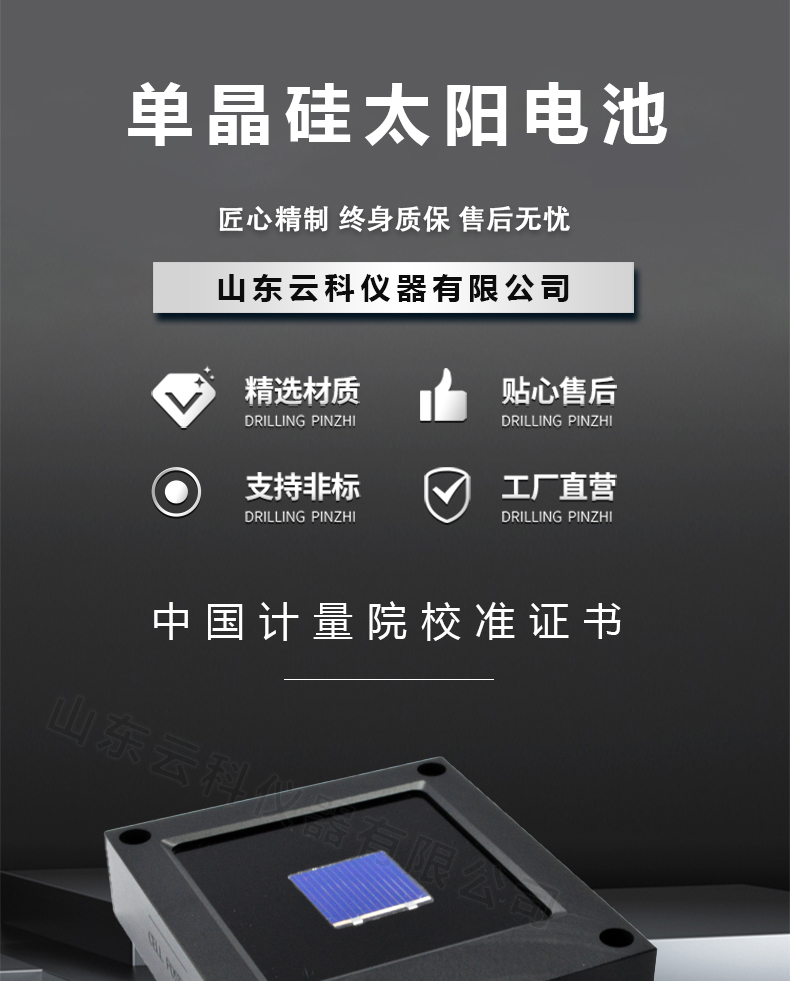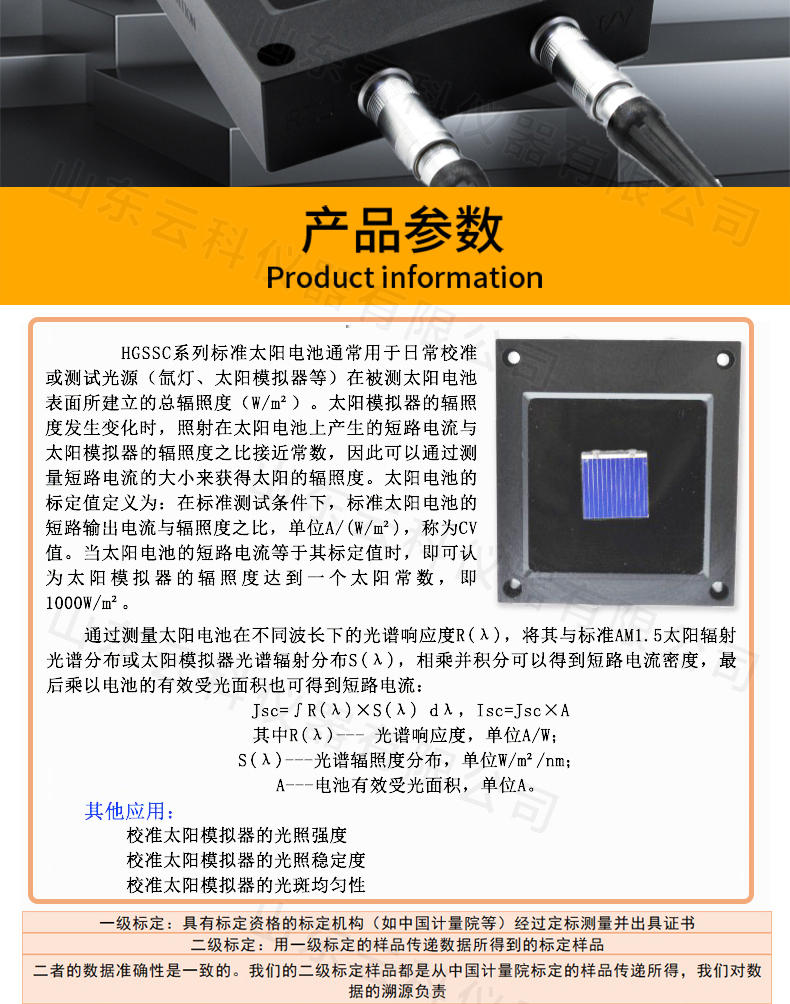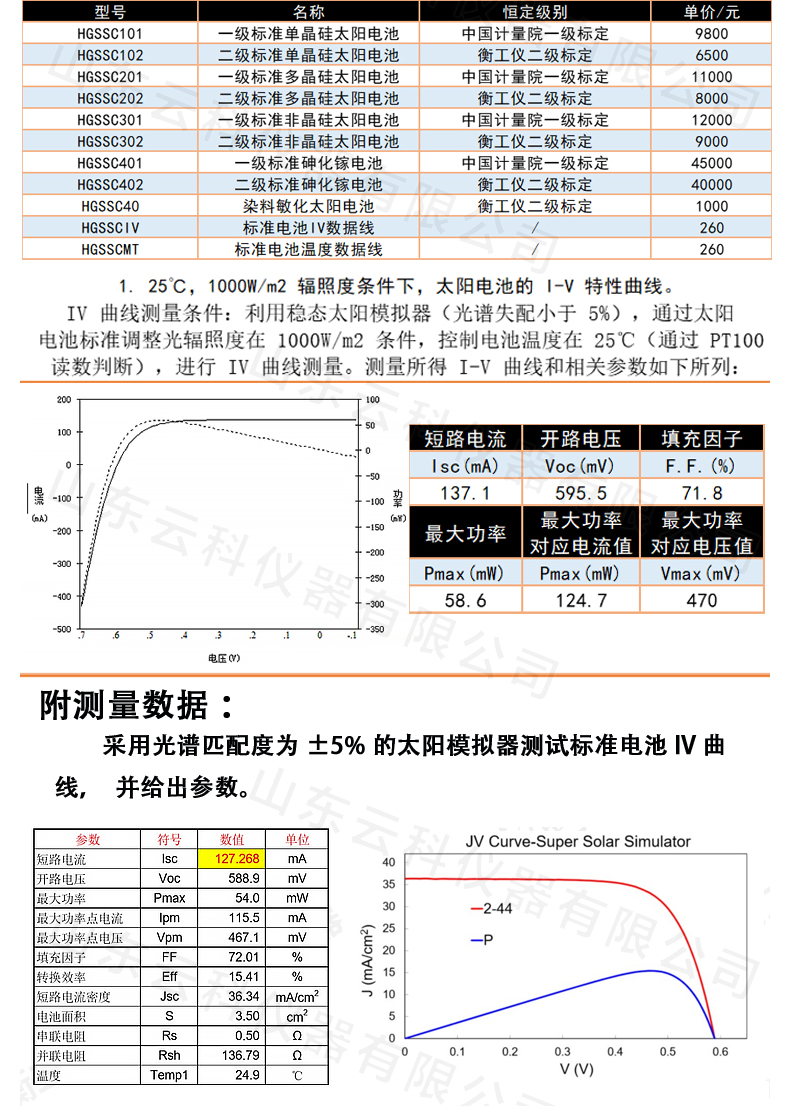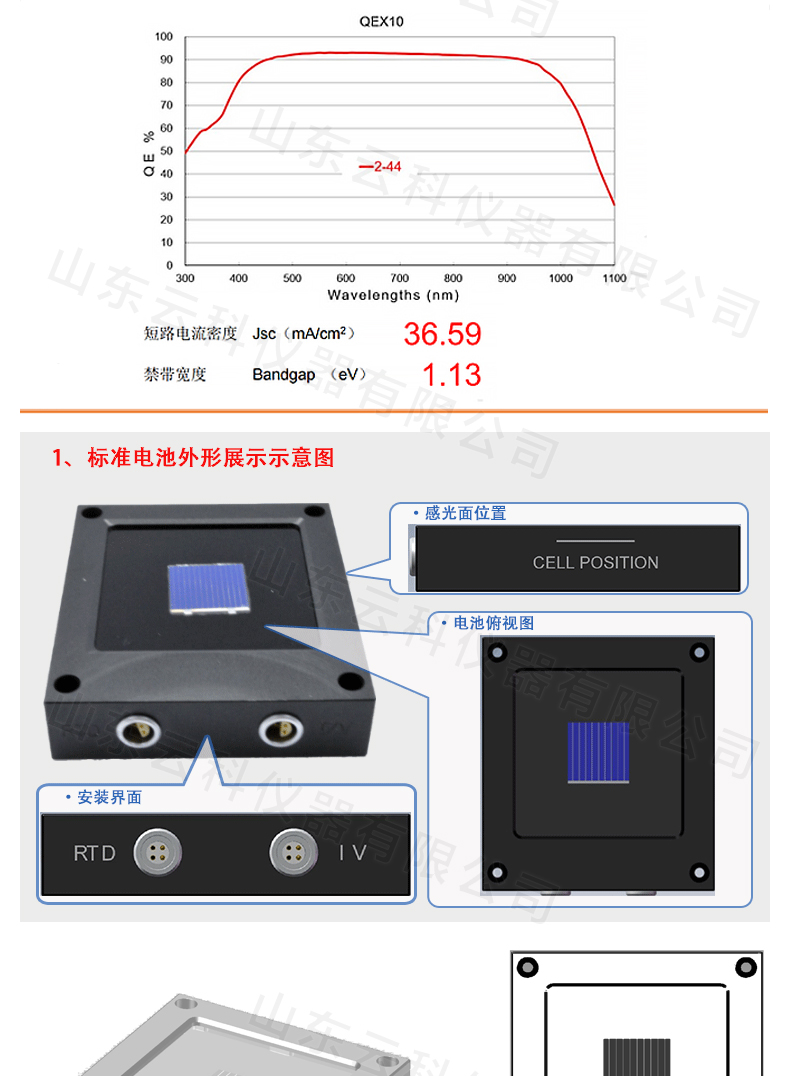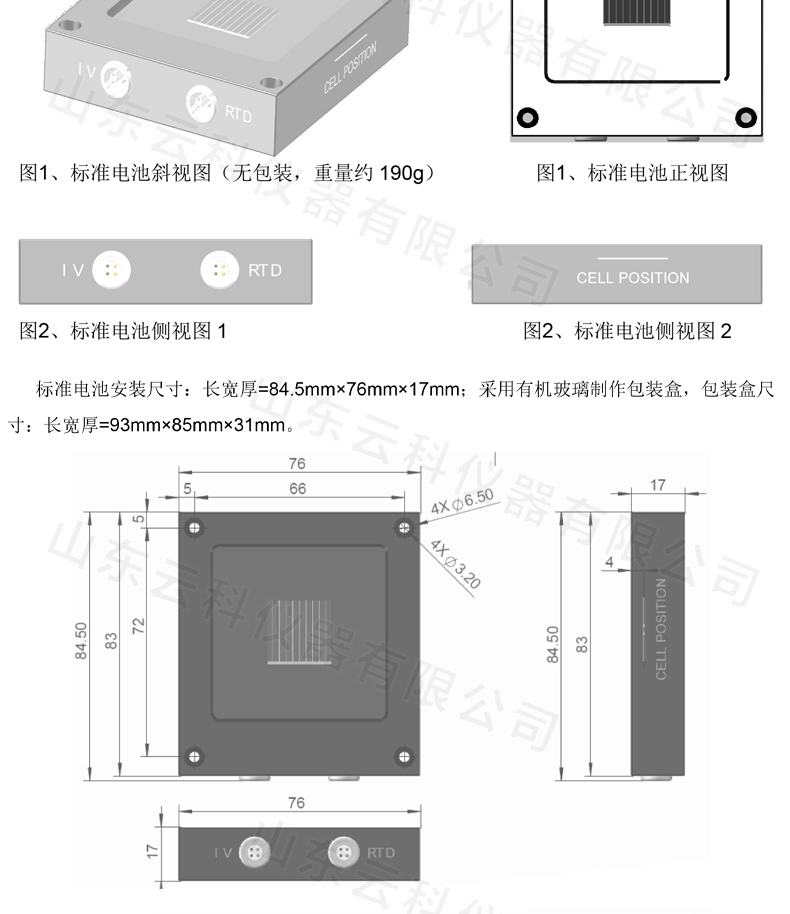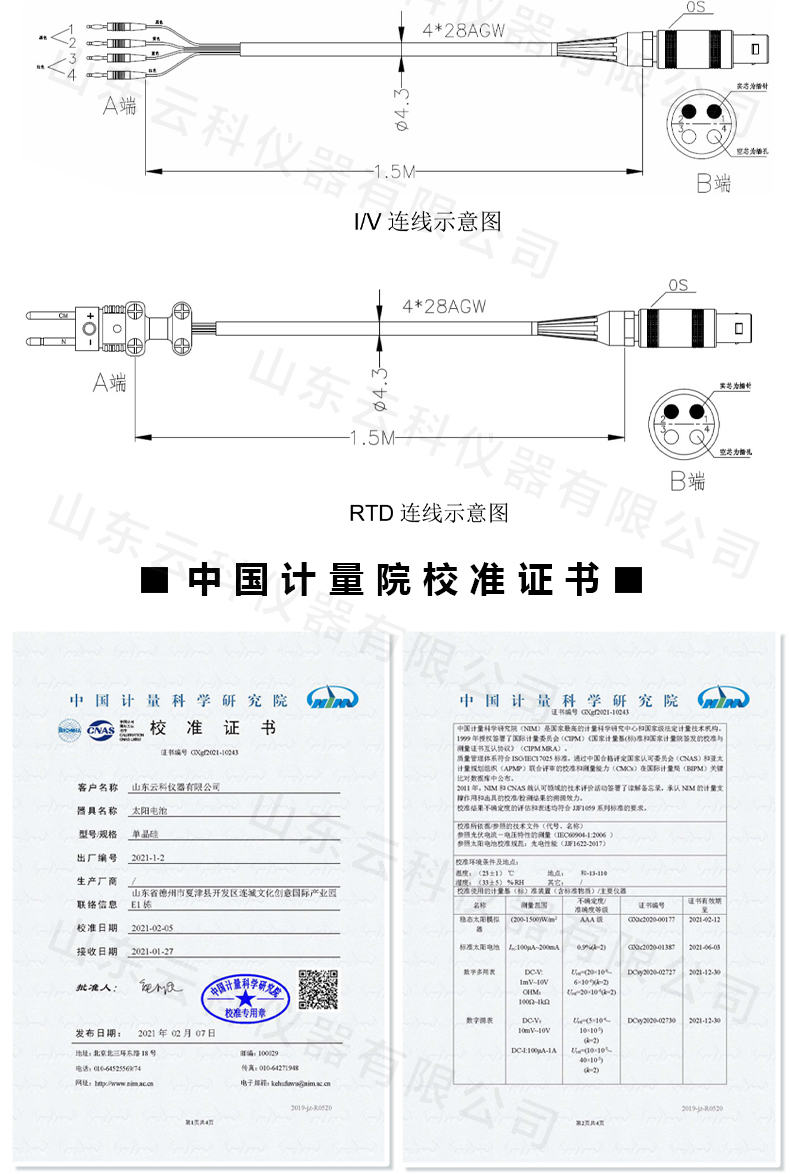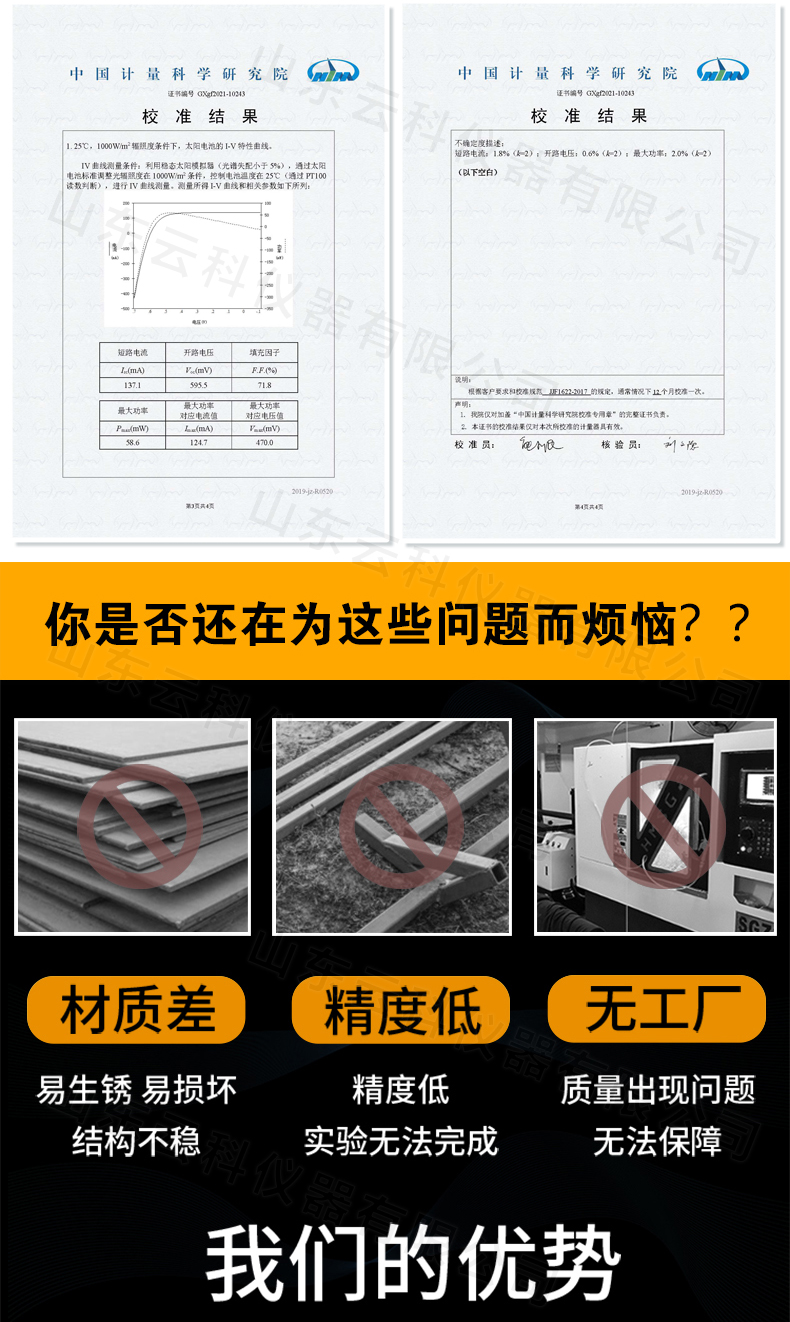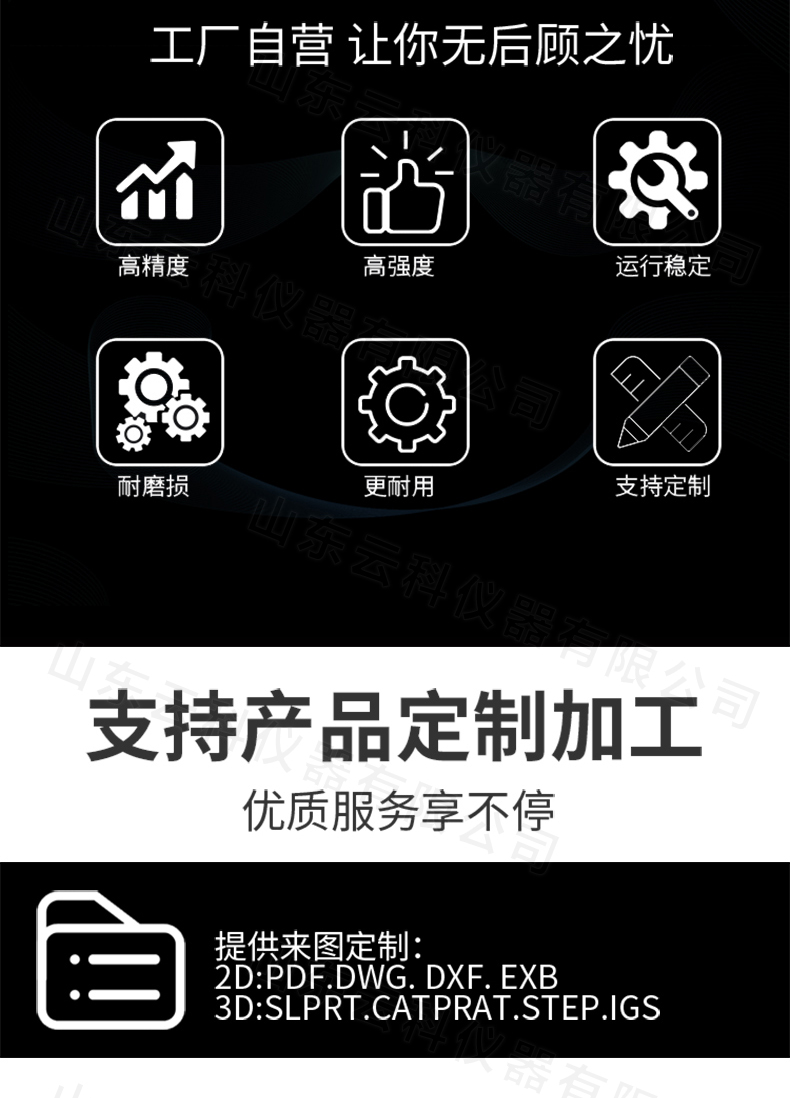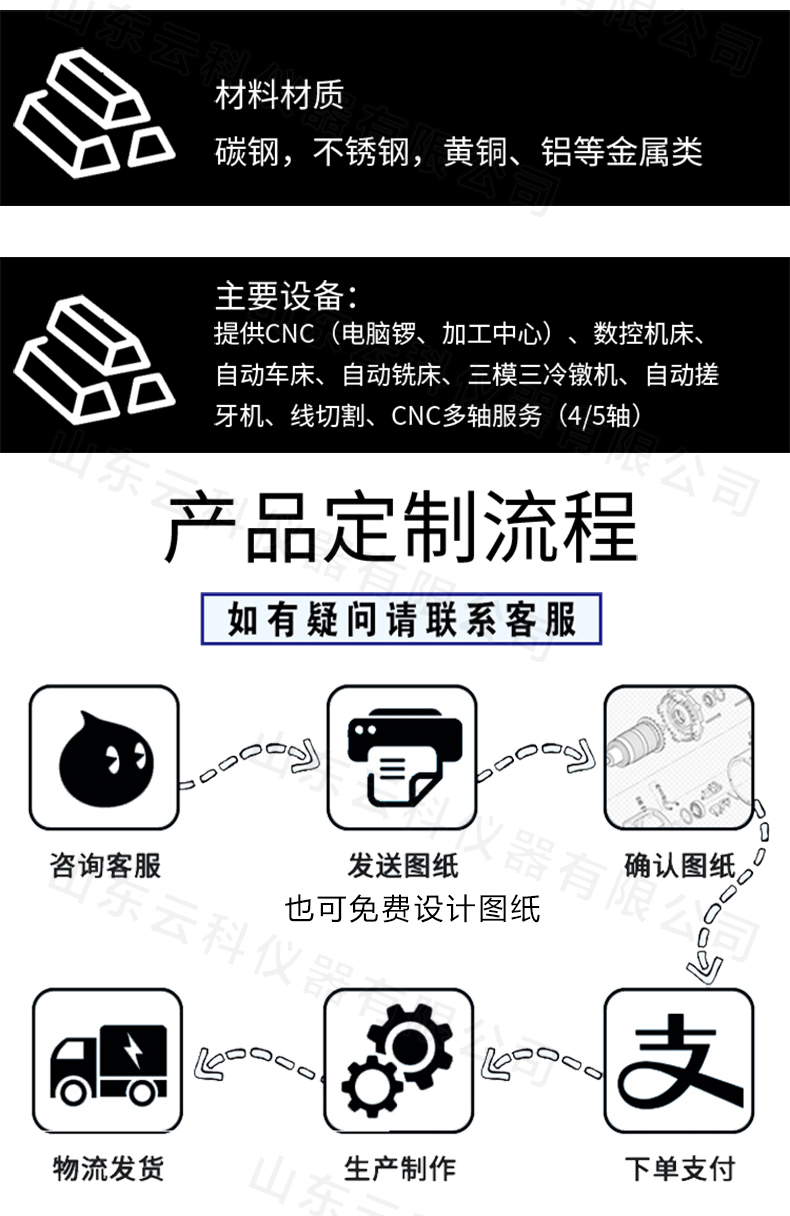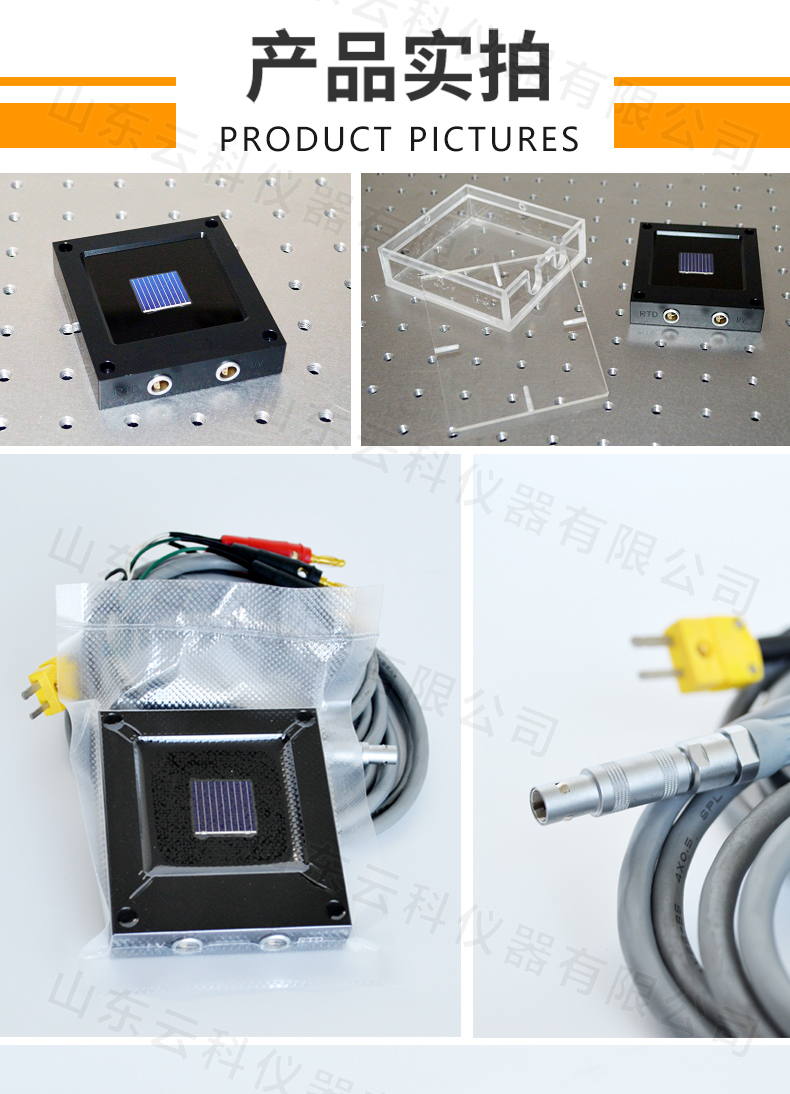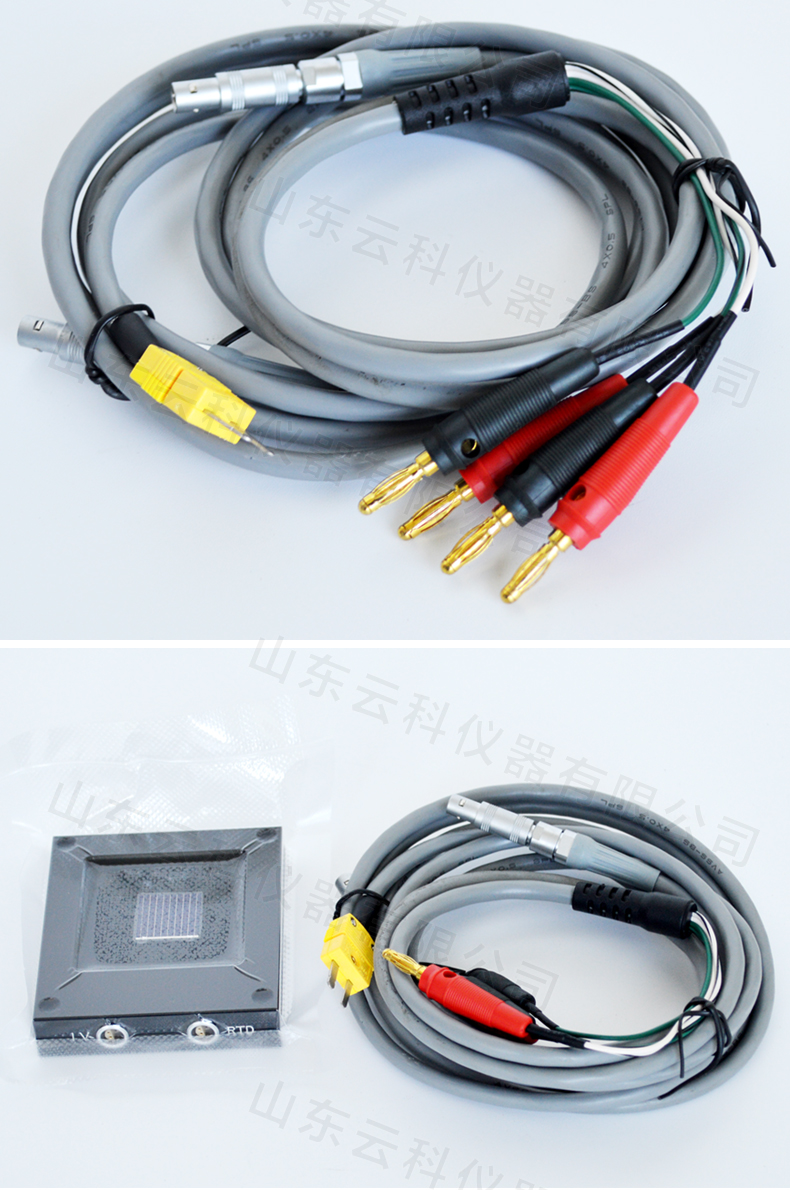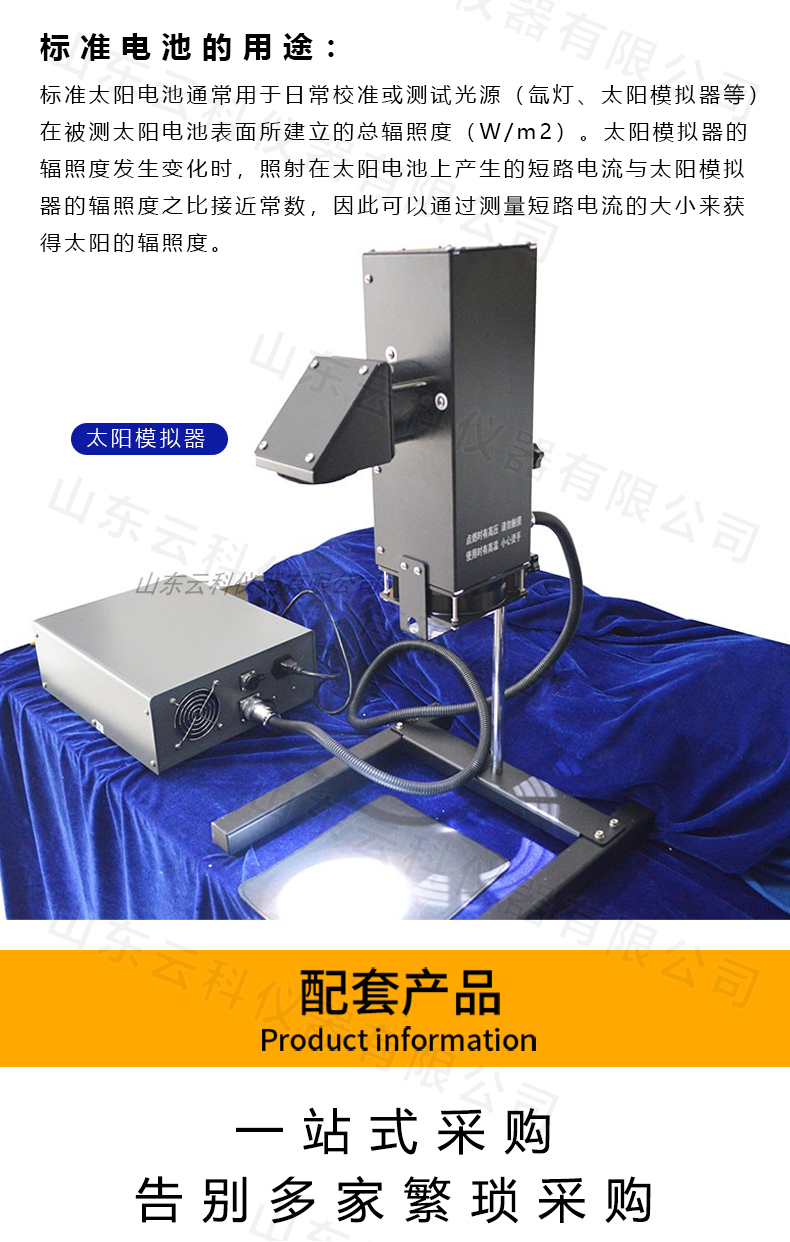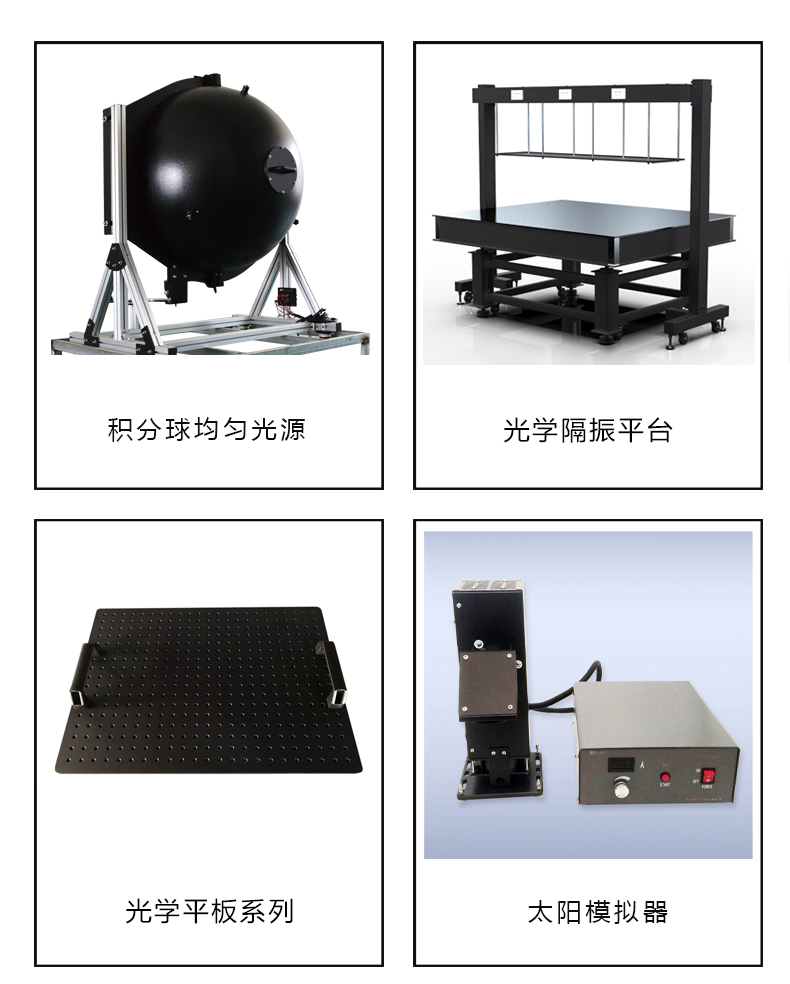Standard battery uses:
Standard solar cells are usually used for daily calibration or testing the total irradiance (W/m2) established by light sources (xenon lamps, solar simulators, etc.) on the surface of the solar cell under test. When the irradiance of the solar simulator changes, the ratio of the short-circuit current generated on the solar cell to the irradiance of the solar simulator is close to constant, so the irradiance of the sun can be obtained by measuring the short-circuit current. The calibration value of the solar cell is defined as: under standard test conditions, the ratio of the short-circuit output current of the standard solar cell to irradiance, unit A/(W/m2), known as CV value. When the short-circuit current of the solar cell is equal to its calibration value, the irradiance of the solar simulator can be considered to reach a solar constant, namely 1000W/m2.
By measuring the spectral responsivity R(λ) of solar cells at different wavelengths, it is compared with the solar radiation spectral distribution of standard AM1.5 or solar simulator spectrum
The short-circuit current density can be obtained by multiplying and integrating the radiation distribution S(λ), and the short-circuit current can also be obtained by multiplying the effective light-receiving area of the battery:
Jsc = ∫ R (lambda) * S (lambda) d lambda, Isc (including A R = Jsc (lambda) - spectral responsivity, unit A/W;
S(λ)-- spectral irradiance distribution, unit W/m2/nm;
A-- Effective light area of the battery, unit A.
Other applications:
Calibrate the light intensity of the solar simulator
Calibrate the light stability of the solar simulator
Calibrate the spot uniformity of the solar simulator
The difference between primary calibration and secondary calibration:
First-level calibration: calibration institutions with calibration qualifications (such as China Metrology Institute, etc.) have been calibrated and measured and issued certificates.
Secondary calibration: the calibration sample obtained by transferring data from the first calibration sample
The accuracy of the data is the same. The secondary calibration samples of Yunke are transferred from the calibrated samples of China Institute of Metrology, and the equipment used has been calibrated to ensure the standard of data. We are responsible for the traceability of data.
